System identification. Discrete-time parametric methods
In this coursebook, we present basic identification methods and algorithms of linear dynamic systems with various disturbance input points. The main aim of an identification experiment is to use measured input and output signals to derive a mathematical model that describes the input-output characteristics of a system. It is assumed that the results of on-line identification are used for control purposes, particulary for adaptive control. The need for identification emerges from the lack of knowledge of the system which is to be controlled. Therefore, the result of identification is the current model of the system or the current control law. In this context, adaptive control systems, often called self-adjusting systems, can be of direct or indirect type, and the algorithms presented in this textbook are chosen for their usability in implementation for such control systems. This coursebook discusses algorithms of parameter estimation in open-loop systems, with attention paid to problems and conditions for arameter estimation performer simultaneously with control, i.e., in a closed-loop system. A considerable number of the discussed algorithmswere examined in digital simulations using Matlab. This coursebook accompanies systemidentification lectures and laboratory classes held at the Faculty of Control, Robotics and Electrical Engineering, Poznan University of Technology.
Table of contents
Preface 7
1. Introduction 9
1.1. The concept of system identification 9
1.2. Classification of identification methods 12
2. Systemmodels 13
2.1. Introduction 13
2.1.1. Discrete-time models 13
2.1.2. Discretisation using the zero-order hold method 14
2.1.3. Tustin’s method 15
2.1.4. Finite difference method 15
2.2.Deterministic models 16
2.2.1. FIR model 16
2.2.2. ARMA model 17
2.2.3. State-space model 19
2.3. Stochastic models 23
2.3.1. ARMAX and ARIMAX models 23
2.3.2. ARX and ARIX models 24
2.3.3. Output error model 26
2.3.4. State-space model 27
2.4. Bounded noise models 29
2.4.1. Model with simple disturbance input 30
2.4.2. Model with compound disturbance input 30
2.4.3. State-space model 31
2.5.Model properties 32
2.5.1. Controllability, reachability, observability and detectability 32
2.5.2. Identifiability 33
3.Direct estimationmethods 35
3.1. Introduction 35
3.2.Order of persistent excitation 36
3.2.1. Definition 36
3.2.2. Order of persistent excitation of typical signals 37
3.2.3. Persistent excitation and parameter estimation 38
3.3.Deterministic models and the least-squares method 39
3.4. Stochastic models and the least-squares method 40
3.4.1. Least-squares method for stochastic models 40
3.4.2. Weighted least-squares method 48
3.4.3. Bias-eliminated least-squares method 48
3.4.4. Instrumental variables method 51
3.4.5. Maximum likelihood method 52
3.5. Bounded noise models and the least-squares method 55
3.6.Model order estimation 56
4. Recursive estimationmethods 58
4.1. Introduction 58
4.2.Deterministic models 58
4.2.1. Least-squares method 58
4.2.2. Projection method 62
4.2.3. Modified projection method 62
4.2.4. Modified projection method for prediction model 64
4.2.5. Modified least-squares method for prediction model 64
4.3. Stochastic models 65
4.3.1. Least-squares method // 65
4.3.2. Bias-eliminated least-squares method 65
4.3.3. Kalman filter method 66
4.3.4. Stochastic approximation metho 67
4.3.5. Instrumental variables method 67
4.3.6. Extended least-squares method 68
4.3.7. Maximum likelihood method 68
4.3.8. Extended Kalman predictor 69
4.3.9. Second-order filter 71
4.4. Bounded noise models 72
4.4.1. Least-squares method 72
4.4.2. Least-squares method for prediction model 73
4.4.3. EW-RLS algorithm 74
4.4.4. MVSA algorithm 74
4.4.5. Fixed dead zone method 75
4.4.6. Projection method with dead zone 76
4.5. Recursive estimation of the order and parameters 78
4.5.1. Introduction 78
4.5.2. Preliminary assumptions 79
4.5.3. Recursive estimation of the degrees and coefficients 80
4.5.4. Recursive algorithm for the simultaneous degrees and parameters estimation 83
4.6.Model delay estimation 86
5. Time-variant systemidentification 89
5.1. Introduction 89
5.2.Weighted least-squares method 90
5.3. Forgetting factor and windup in estimation 90
5.4.Modifications of recursive least-squares method 92
5.4.1. Investigation of persistent excitation condition 92
5.4.2. Adaptation to noise 94
5.4.3. Robust estimation 95
6. Closed-loop systemidentification 97
6.1. Introduction 97
6.2. Example of first-order inertia system 97
6.3.General conditions for identifiability 98
6.4. Identifiability of LQG control system 99
6.5.Model order estimation in a closed-loop system 101
7. Selection of excitationsignal 103
7.1. Introduction 103
7.2. FIR model 103
7.3.ARX bounded noise model 104
7.4. Stochastic ARX model 107
7.5. Selection of excitation signal and uniqueness of estimation 107
8.Multivariable systemidentification 109
9. Case study – simple identificationexperiment 119
9.1.Analitical method 119
9.2. The ’real’ experiment 120
10. Experiment implementationinMatlab 123
10.1. Parameter estimatio 123
10.2. Creating model structure 124
10.3.Model conversion 125
10.4. Selected additional functions 125
10.5. Simulink 125
Summary 126
References 127
Indeks: ISBN 978-83-7775-579-2
Rok wydania: 2020
Wydanie: I
Status: nowość
Stron: 130
Język publikacji: angielski

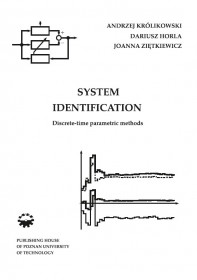
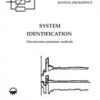

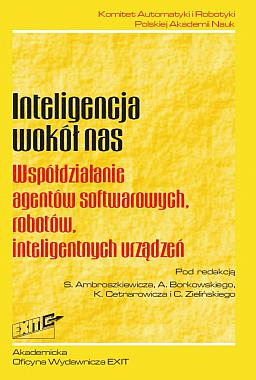
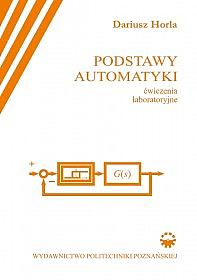
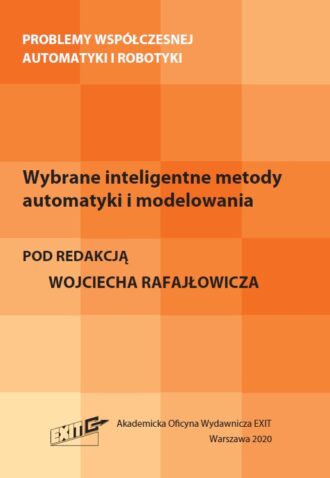
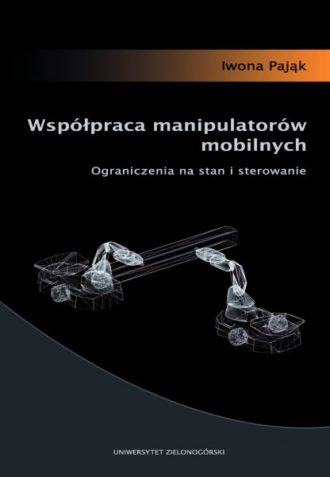
Opinie
Na razie nie ma opinii o produkcie.